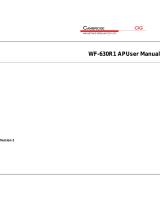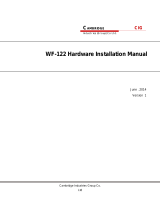
PRECAUTIONS AND GENERAL RECOMMENDATIONS
To get full satisfaction from your hob, please read these instructions carefully and keep them for future
consultation
• These instructions are only valid for those Countries where the destination abbreviations are mentioned on the product
description sheet and on the hob.
• Keep the packaging material (plastic bags, polystyrene parts, etc.) out of the reach of children, as they are potentially
dangerous.
• Check whether the hob has been damaged during transport and remove any protective film from the appliance parts.
• This hob (Class 3) is designed solely for household use for cooking food. Any other use (such as heating
rooms) is to be considered improper and, as a consequence, dangerous.
• Make sure the installation and gas/electrical connections are carried out by a qualified technician in
compliance with the current local regulations.
• This appliance should only be installed and used in well-ventilated rooms, in accordance with current
regulations. Carefully read the instructions before installing and using this appliance.
• Gas adjustment and supply pressure are indicated on the rating plate located under the hob. If another
type of gas is to be used, refer to the section “Conversion to different types of gas”.
REFERENCE TO LOCAL REGULATIONS
Gas installations for household cookers must comply with the REGULATIONS ON GAS INSTALLATIONS IN
INHABITED BUILDINGS, published in the B.O.E. [Official State Gazette] No. 77, of March 30, 1974.
Ensure that the installation and gas/electrical connections are performed by a qualified technician, following the manufacturer's
instructions and in compliance with current local safety regulations.
Regulation for room ventilation
Note: If the appliance is not equipped with safety devices on the burners (thermocouples), the air vents must be increased by
100%, and must be at least 200crn
2
, in compliance with M.D.21 April 1993.
Connection to gas supply
Before connecting the appliance, make sure that the gas supply system complies with standards UNI-CIG 7129 and UNI CIG
7131.
Gas connection
The connection to the mains gas network or gas cylinder must be made using a rigid copper or steel pipe with fittings
complying with standards UNI-CIG 7129, or using a continuous-surface stainless steel hose complying with standards
UNI-CIG 9891. The maximum length of the hose is 2 m. Pressure control valves must comply with standards UNI-CIG 7432.
SAFEGUARDING THE ENVIRONMENT
1. Packaging
The packaging material is entirely recyclable, and is marked with the recycling symbol , which identifies it as a type of
material that must be sent to local waste-disposal centres.
2. Product
This appliance is marked according to the European directive 2002/96/EC on Waste Electrical and Electronic Equipment
(WEEE).
By ensuring this product is disposed of correctly, you will help prevent potential negative consequences for the
environment and human health.
The symbol on the product, or on the documents accompanying the product, indicates that this appliance may not
be treated as household waste. Instead, it must be delivered to an appropriate collection point for the recycling of
electrical and electronic equipment.
Disposal must be carried out in accordance with local environmental regulations for waste disposal.
For further information on the treatment, recovery and recycling of this appliance, contact your competent local
authority, the collection service for household waste or the shop where you purchased the appliance.
Declaration of Conformity
• This cooking hob has been designed, constructed and marketed in compliance with:
- safety requirements of EEC “Gas” Directive 90/396;
- safety objectives of the “Low Voltage” Directive 2006/95/CE (which replaces 73/23/CEE and subsequent amendments);
- protection requirements of EEC “EMC” Directive 2004/108/EC;
-requirements of EEC Directive 93/68.
• This hob is suitable for contact with foodstuffs and complies with EEC (CE) Regulation n. 1935/2004.
NOTES:
• Improper use of the grids could scratch the hob. Do not position the grids upside down or drag them across the hob.
• If the hob has a glass ceramic top, do not use:
- Cast iron griddles or terracotta pots and pans
- Heat diffusers (e.g. metallic mesh)
- Two burners for the same pot
• In the event of prolonged use, additional ventilation may be needed (opening a window or increasing the extraction
force of the hood).
• The appliance is not intended for use by persons (children included) with physical, sensory or mental impairment or
without experience and knowledge of the appliance, unless supervised or previously instructed in its use by those
responsible for their safety.
• Keep children away from the hob when it is in use and do not let them play with the controls or any other appliance parts.
Warning: the protective rubber feet on the grids represent a choking hazard for young children. After removing the
grids, please ensure that all the feet are correctly fitted.
• Attention: the glass lid (if provided) may shatter if overheated. Before closing it, make sure that all the burners are off.
After use, make sure that the knobs are in position OFF and close the main gas delivery or cylinder tap
INSTALLATION
TECHNICAL INFORMATION FOR THE INSTALLER
• This product can be embedded in a worktop 20 to 40 mm thick.
• If there is no oven beneath the hob, insert a separator panel that has a surface at least equal to the opening
in the work surface. This panel must be positioned at a maximum distance of 150 mm below the upper
surface of the work surface but, in no case less than 20 mm from the bottom of the hob. If there is an oven
beneath the hob, make sure that it is manufactured by Whirlpool and equipped with a cooling system. The
manufacturer declines all liability if another brand oven is installed beneath the hob.
• Before installation, make sure that:
- the local gas delivery conditions (nature and pressure) are compatible with the settings of the hob (see the
rating plate and injector table).
- the outer surfaces of the furniture or appliances adjacent to the hob are heat resistant according to local regulations.
- combustion products are discharged outdoors through specific hoods or wall and/or window mounted electrical fans.





